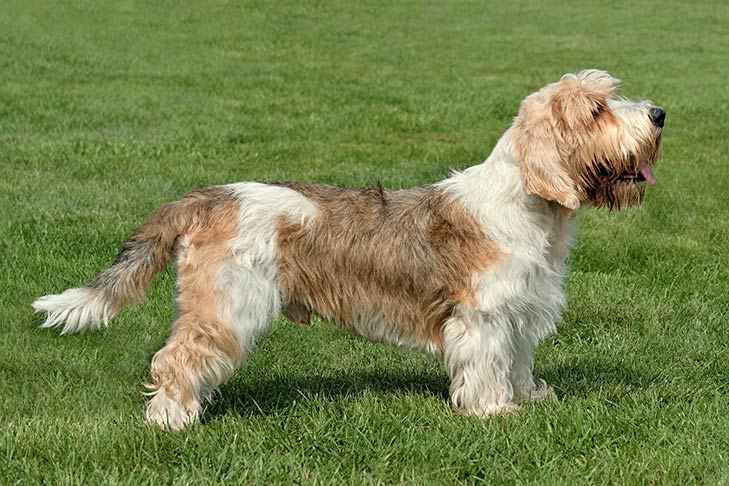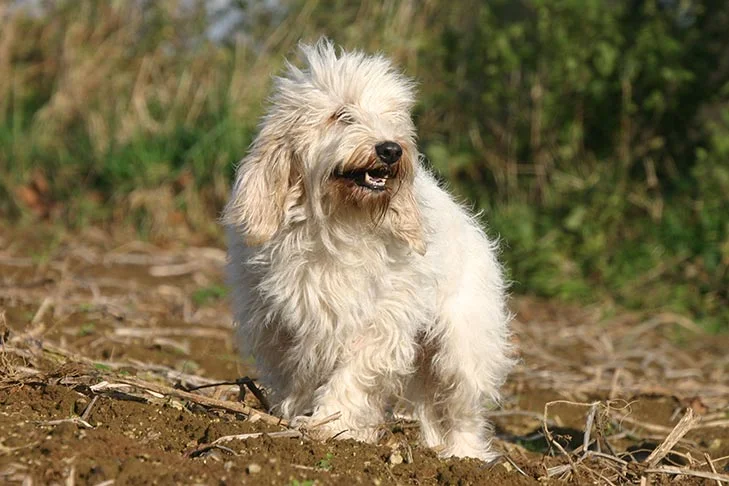The energetic French rabbit-hunting dog recognized for a joyful disposition and tough constitution is the low-slung, shaggy-coated Petit Basset Griffon Vendéen. Being pack-oriented breeds, PBGVs enjoy the company and get along well with both children and other dogs.
The name is loosely translated as Petit (little), Basset (low), Griffon (shaggy), and Vendéen (from the Vendée region of France), which accurately defines the dog. All in all, you get a small-framed hound that was developed to hunt rabbits on the untamed west coast of France. It stands 13 to 15 inches tall at the shoulder, has short but powerful legs, and has a rough, disheveled coat. These small extroverts also have a saber tail, a loud, hound-like bark, and a proudly carried head.







 Health
Health Grooming
Grooming Exercise
Exercise Training
Training Nutrition
Nutrition